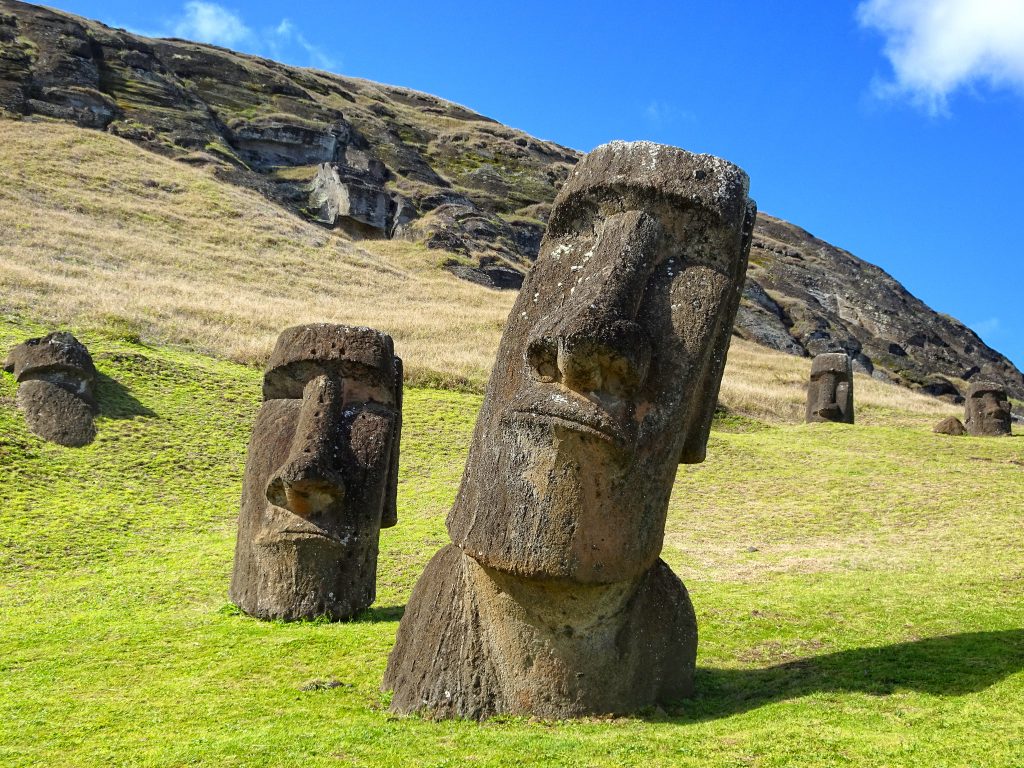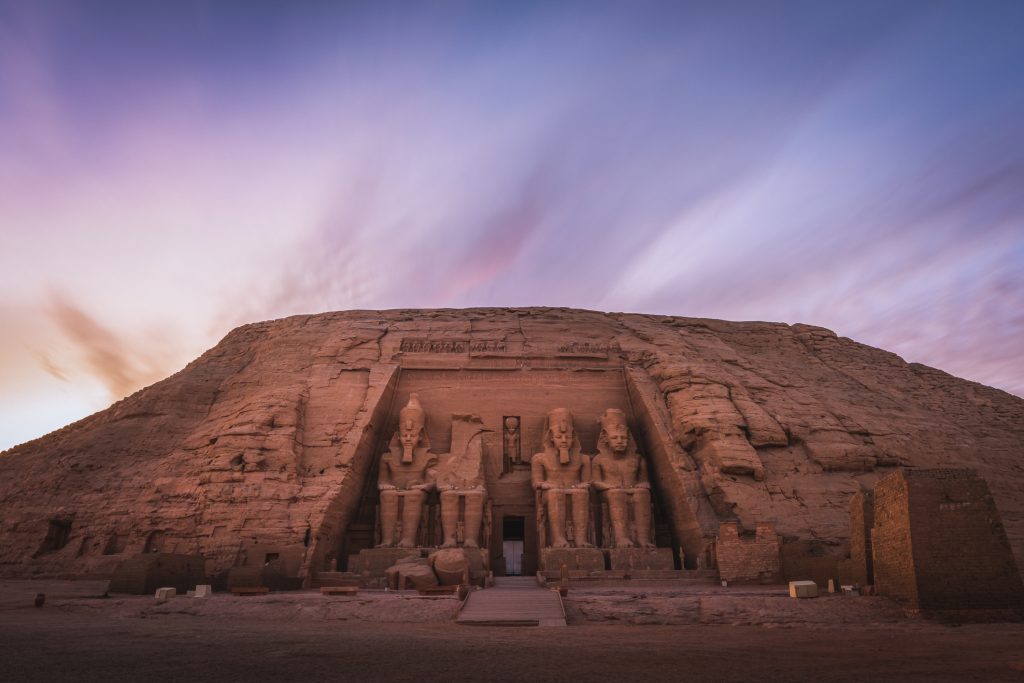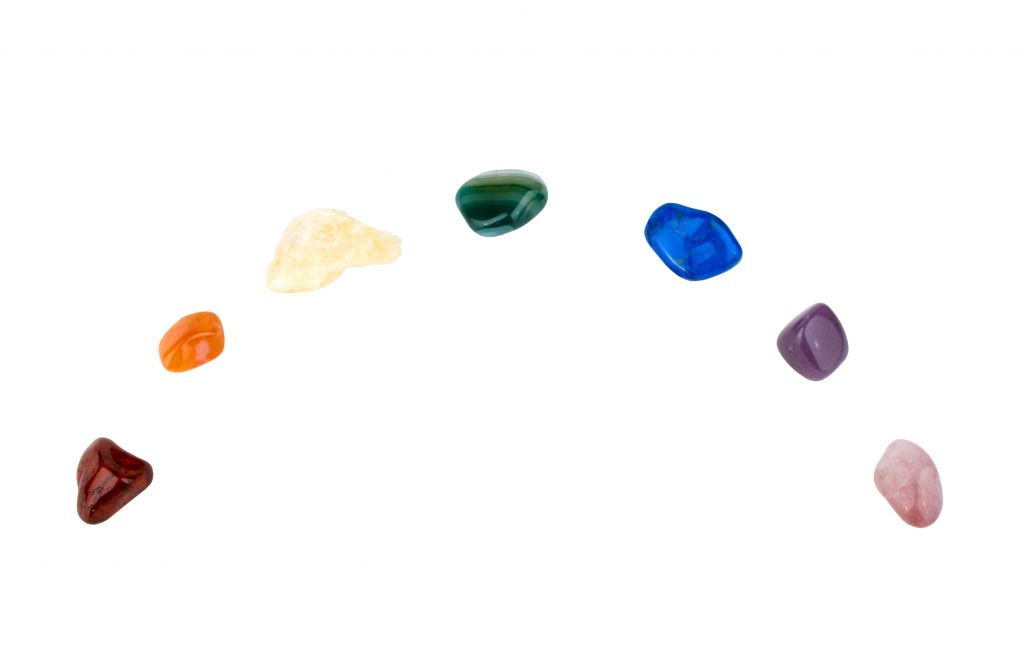The vibrant and culturally rich Mexico is home to some of the most beautiful ancient sites found on earth. Scattered across the country are countless examples of ancient constructions containing mysterious structures.
Built by a number of mysterious ancient civilizations, the origins of the many of prehistoric Mexico Ruins are unknown. If you are traveling in Mexico, then you should stop to appreciate local ancient structures and folklore.
Who built the Mexico Ruins?
Before you visit the sites it’s a good idea to get an idea of the ancient civilizations that lived in Mexico.
The groups of civilizations that developed in ancient Mexico in the area referred to as “Mesoamerica.” They share many cultural traits, however, are different and lived at different times. The ancient ruins they left behind all have their distinct signature.
They shared writing systems, calendars, a ball game played with a rubber ball, pyramid building, and agriculture (cultivating mainly corn, beans, and squash). However, they are distinct in other respects.
These ancient civilizations who built the Mexican ruins are attributed to cultures like the:
- Olmec
- Maya
- Toltec
- Aztec
- Other – a lost civilization yet unidentified.
Many of the ancient sites in Mexico destroyed when the conquistadors invaded in the year 1521. Despite this, there are thousands of the Mexican ruins still that remain standing. Countless more ruins could very well lay undiscovered in the jungles or unexplored lands of the North American nation.
What ruins are near Mexico City?
For travelers visiting Mexico City, there are a number of ancient ruins to visit.
The must-see sites include:
1) Chichen Itza

Chichen Itza is a famous Mexico Ruin near Mexico City. Source
The most famous of all the ruins found in Mexico are those of Chichen Itza.
Chichen Itza is one of the most famous Mayan ruin in Mexico.
Though excavations are still ongoing, this Mayan ruin is an utterly spectacular site. Advanced stonemasonry, geometry, mathematics, and astronomy were used by the Maya to construct such a city.
The most famous structure within Chichen Itza is its massive stepped pyramid known as El Castillo. Standing nearly 100 feet tall and made from carved limestone, it is this structure that has earned the title of one of the new Seven Wonders of the World.
Another important building of Chichen Itza is El Caracol, one of the Mayans oldest observatories. It is thought to have been primarily used to track solstices, equinoxes, and eclipses. It is also aligned perfectly to track the movements of Venus. The Maya incorporated this as part of their highly advanced astronomical knowledge.
2) Monte Alban
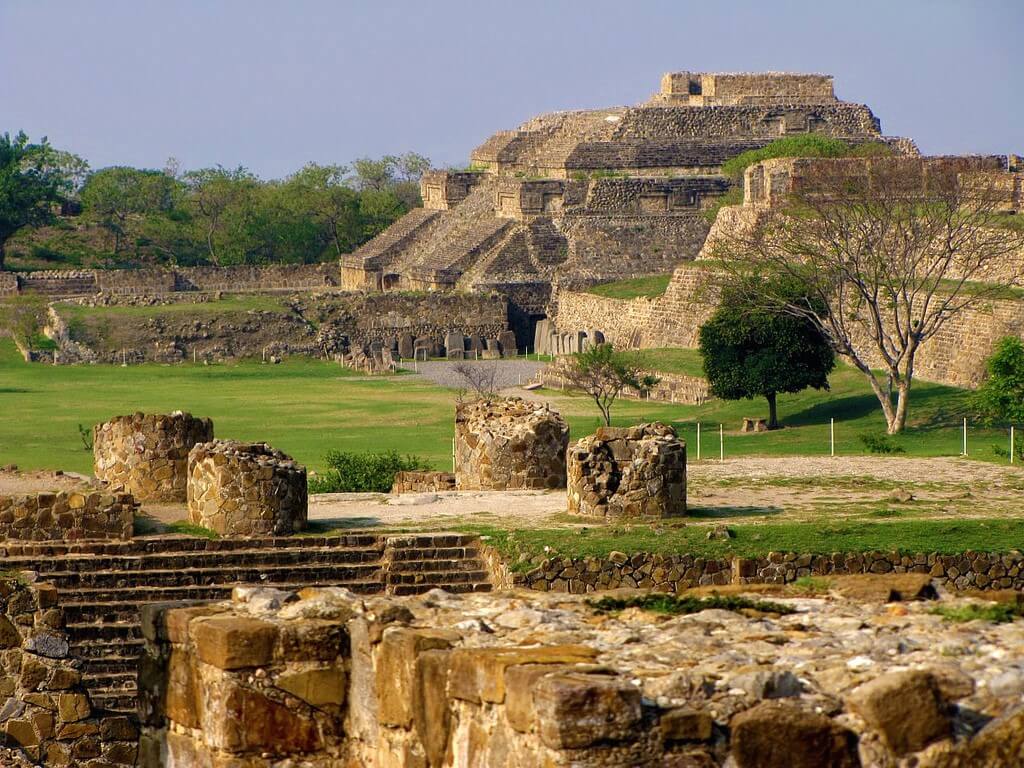
Monte Alban is a Mexico Ruin near Mexico City. Source
Beautifully sculpted terraces, temples, an observatory, a stunning mountaintop location, Monte Alban has it all. This Mexican ruin was an extremely important cultural site in ancient times, with many different civilizations inhabiting it over its rich history.
It is thought that Monte Alban was used as a fortification, as its mountaintop location is over 1300 feet above a valley floor. When visiting this ancient site, tourists are treated to magnificent views; a slight insight into what life was like for the ancient occupants.
3) Uxmal
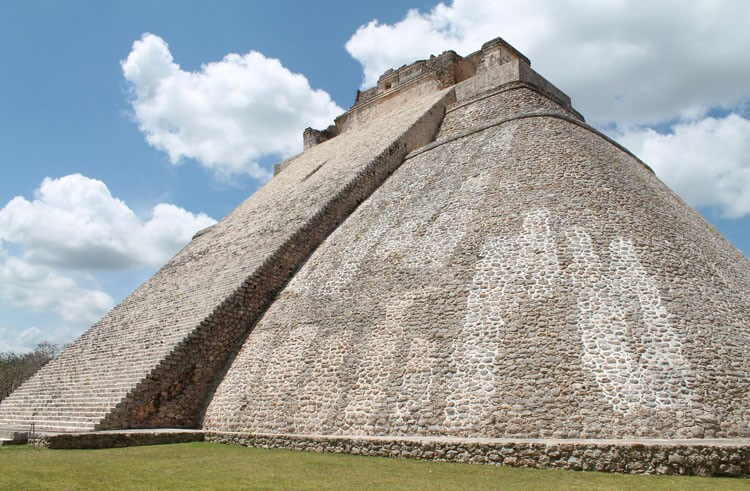
Uxmal is a Mexico Ruin near Mexico City. Source
Uxmal is one of the most famous Mayan ruins in Mexico.
Extremely popular among tourists, Uxmal is definitely worthy of the crowds. Considered one of the most important Mexican ruins, Uxmal is in remarkable condition and appears as if it was only uninhabited yesterday.
The pyramid of the magician, the largest pyramid found at Uxmal, was constructed with an elliptical base, giving an unusual appearance to this Mexican ruin.
4) Teotihuacan

Teotihuacan is a Mexico uin with a huge pyramid complex near Mexico City. Source
With its origins shrouded in mystery, this Mexican ruin is home to some of the largest pyramids in all of Mexico. The ancient site boasts some of the best preserved and most visited ruins in the entire country.
The largest pyramids in Mexico, they are neither Mayan or Aztec.
Some strange discoveries in the last few years have created more interest in this once flourishing city. Most notably a mysterious underground chamber full of liquid mercury.
What Mexican ruins are near Cancun?
5) Tulum
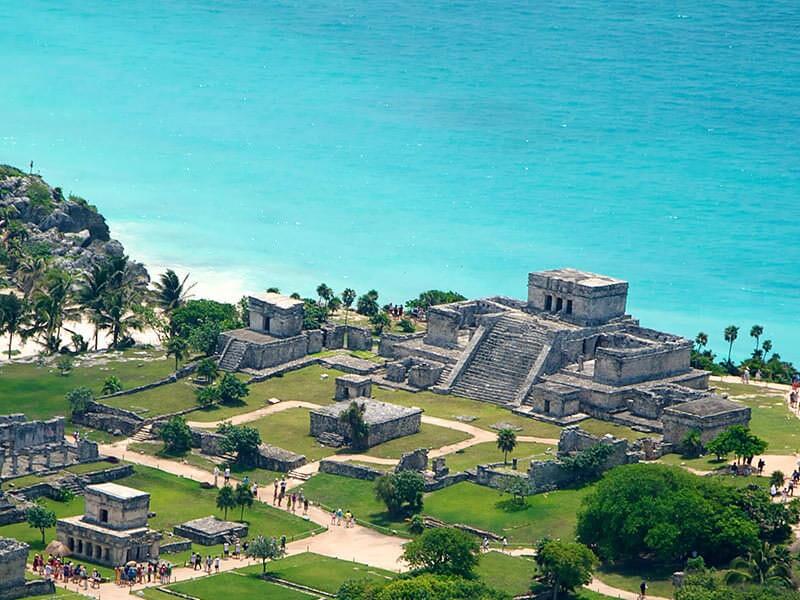
Tulum is a Mexico Ruin near Cancun.
Overlooking Mexico’s stunning Caribbean coast, this ancient site marks the location the invading Conquistadores first met the Maya.
While this particular Mexican ruin isn’t the largest or most impressive, it is one of the most picturesque. Sitting high on a hill overlooking the blue waters below, the stone watchtower ‘El Castillo’ is the most iconic aspect of Tulum.
6) El Rey

El Rey is a Mexican Ruin near Cancun. Source
El Rey is the most important archaeological site in Cancún. It consists of 47 structures that preserve remnants of a mural painting that depict Mayan deities and symbols. These buildings served as temples and residences for high-status people.
The most important building is structure 2. A Mayan pyramid base of great height and the only one with a temple.
Structures I and 4 are huge palaces made up of large galleries with columns that held the flat roof; it is possible that administrative functions took place here.
The site seems to be founded in 300 B.C. After some research, it can be assumed that, between 200 and 1200 A.D., its inhabitants were primarily dedicated to fishing and salt mining.
El Rey became an important site quite late in its history. From 1300 to 1550 A.D. important groups came to settle in the coasts of the modern state of Quintana Roo.
7) Coba
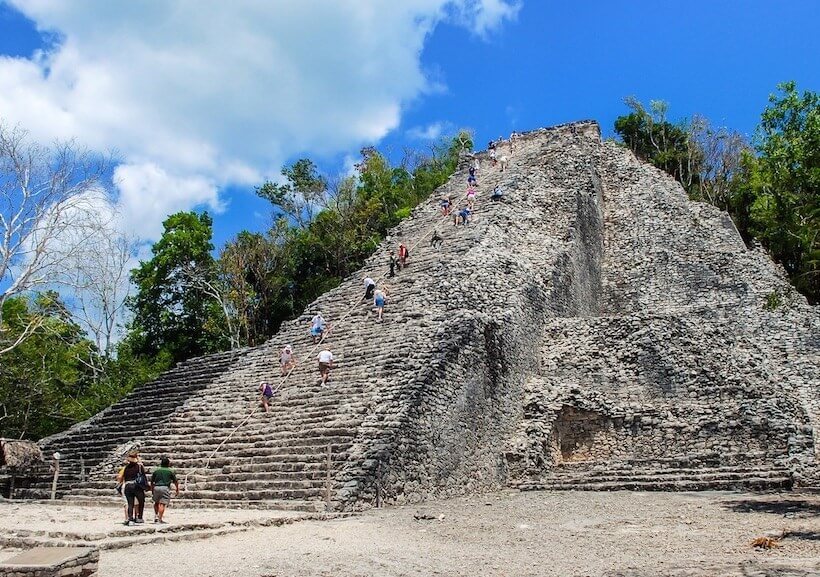
The Mexico Ruin Coba near Cancun.
Also known as the city of white roads, Coba’s claim to fame is its enormous stone causeways systems. Over 50 have been discovered within the site, which is intricately connected as a result.
Trees and jungle are still growing wild as much of the city has only been partly excavated, creating a wild atmosphere for exploration. As Coba isn’t well known among tourists, there is plenty of room to climb and investigate this ancient Mexican ruin.
Other Mexico Ruins to visit on your travels
8) Angamuco

The Mexico Ruin of Angamuco made by a lost civilization. Source
Only recently discovered, this ancient Mexican ruin was once made up of as many buildings as Manhattan. Much of the city remains underground. As many as 40,000 buildings, including pyramids, temples, and ball courts are among the structures that make up this ‘lost city.’ The Purepecha are thought to have constructed it; a lesser-known culture who rivaled the Aztecs in ancient Mexico.
9) Chacchoben
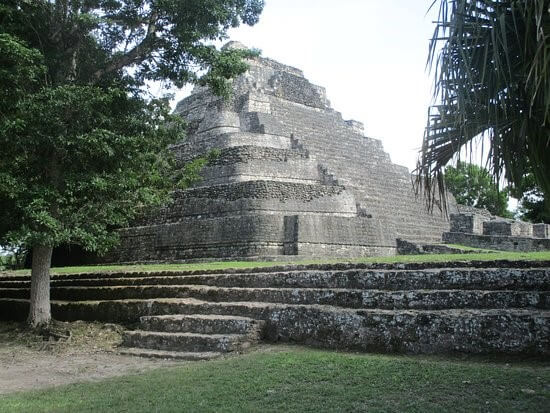
The hidden pyramid at the Mexico Ruins of Chacchoben.
Because of its remote jungle location, Chacchoben is one of the lesser-known Mexican ruins. This doesn’t mean it isn’t worth exploration though, with this ancient Mayan site full of pyramids and unexcavated mysteries.
Many of the structures found within the site still bear the traces of red paint. Some believe the paint may have once covered the entire city.
10) Bonampak
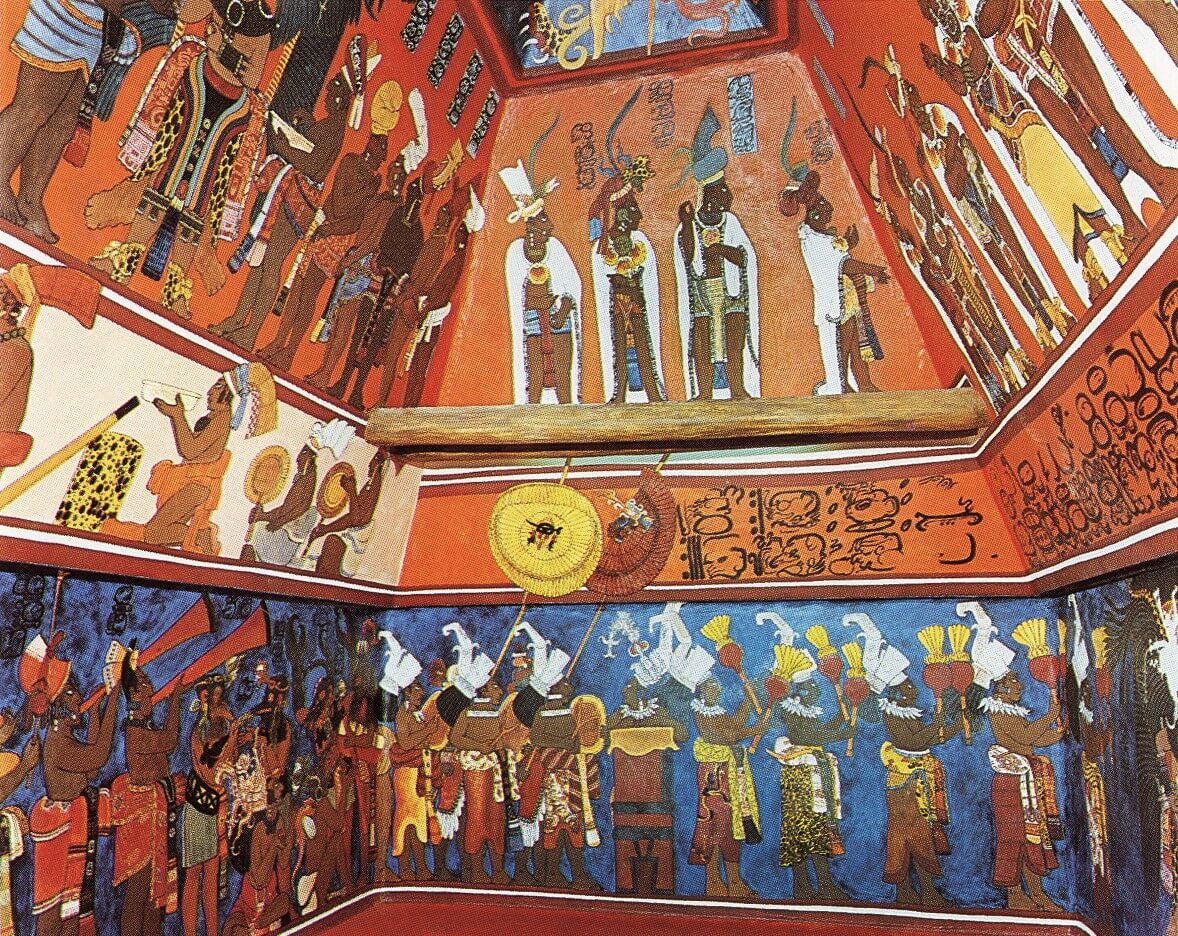
Room 1 of the Mexican Ruin Bonampak.
Made up of beautifully painted murals and colorful artworks, Bonampak is home to some of the best-preserved artworks of the Mayan culture in Mexico.
Although it is small, this Mexican ruin gives a rare glimpse into the daily lives of a lost civilization.
11) Mitla
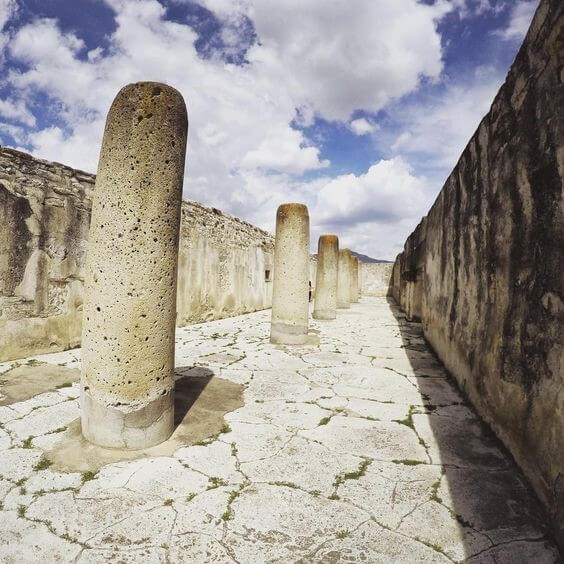
The Mexico Ruins of Mitla. Source
Intricate geometric architecture makes the Mexican ruins of Mitla some of the most amazing in all of Mexico. Only a small percentage of the once vibrant city still stands today, with many structures containing subtle mosaics and geometric patterns made from perfectly fitted standing stones.
Mitla was originally very important to the Zapotec civilization, who had their major religious and political centers located within the city.
12) El Tajin

Mexico Ruins of El Tajin.
The builders of this Mexican ruin are still unknown to archaeologists and historians alike, making this ancient site especially interesting. Although much of the city remains unexcavated, what was uncovered is breathtaking and beautifully preserved.
The largest structure at the site, The Pyramid of the Niches, was once made up of 365 separate alcoves; revealing its importance in regards to the solar year.
13) Edzna
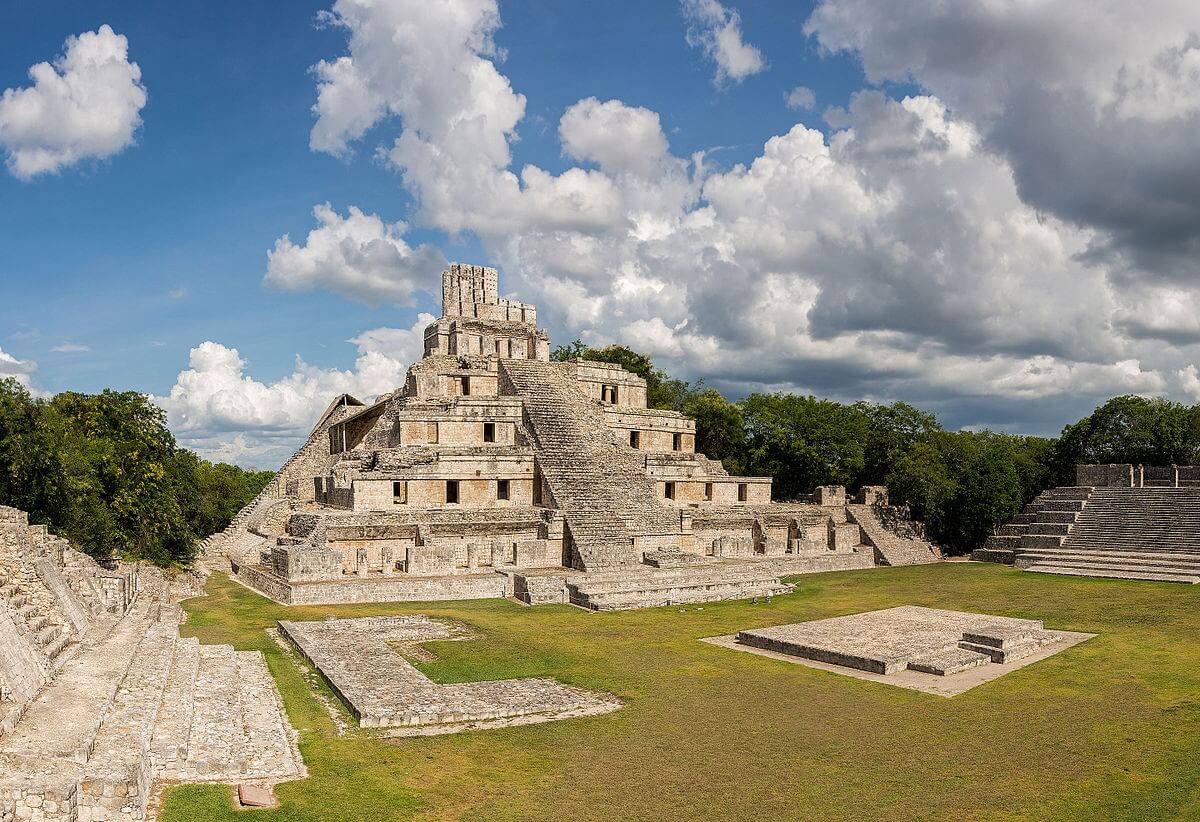
Mexico Ruins of Edzna. Source
Edzna is home to one of the most unique of all the Mexican ruins. The Great Acropolis is a 5-story structure that is something between a pyramid and a palace.
The Mayan culture responsible for building it would be proud to see it still in such good condition. Because of its beauty, Edzna has become one of the most photographed ruins in all of Mexico.
14) Palenque
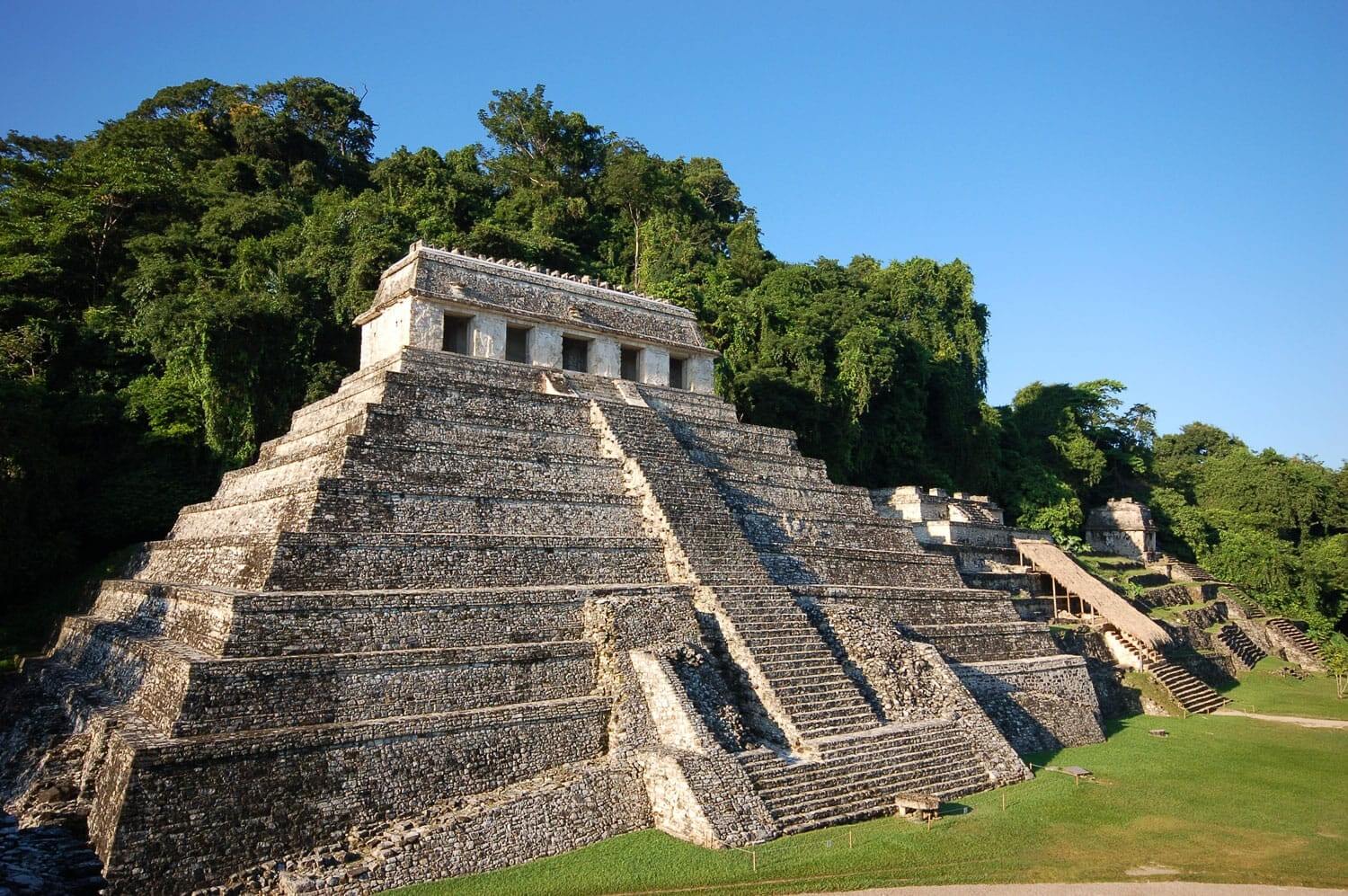
The Palenque pyramids, a Mexico ruin 500 miles south of Mexico City.
With age and size aside, Palenque is most famous for its stunning sculpture, epigraphs, and architecture. Because of the remote jungle location of this Mexican ruin, travelers to the site are greeted by a sense of wilderness as they share the cities ruins with animals and birds alike.
15) Templo Mayor
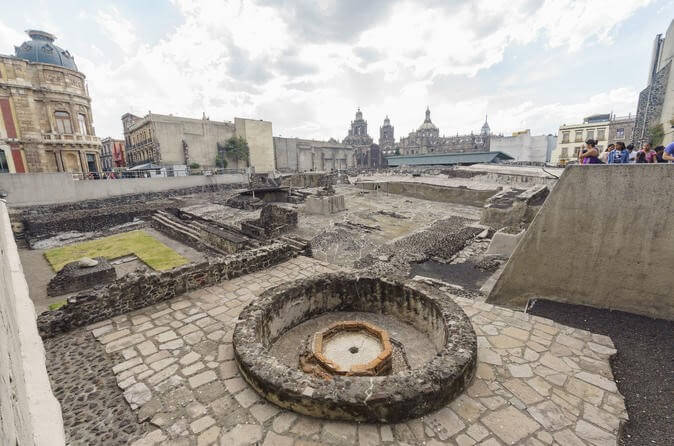
The Mexico Ruins of Templo Mayor. Source
Best known as a site of countless human sacrifices, this Mexican ruin was believed to be the center of the world by the Aztec.
Although it’s original state is hard to imagine, Templo Mayor was once a twin temple site honoring two Aztec Gods in which the city was dedicated. As an important site to the ancients, it underwent as many as seven reconstructions throughout its decorated history.
16) Xochicalco
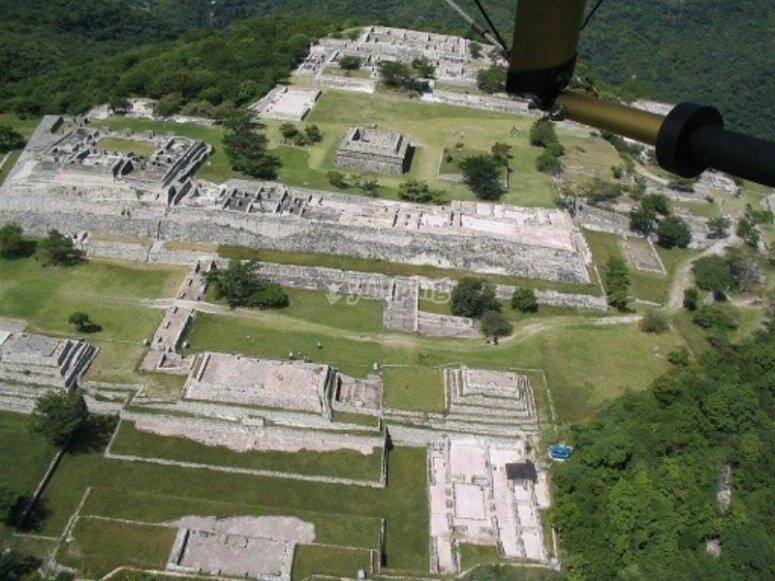
The Mexico ruins of Xochicalco. Source
An underground tunnel system connects many of the key buildings at Xochicalco. This has led many to ponder the cities original purpose. The Mexican ruin is known to have been heavily fortified and was once a crossroads for culture, religion, and trade in the ancient world.
This has made it popular among travelers, as it is the perfect site to get an understanding of what life was like for cultures like the Aztec, Toltec, and Mixtec.
17) Calakmul

The Mexico Ruins of Calakmul is a little known Mayan Ruin.
Deep in the jungle of southern Mexico is one of the best-kept secrets of the ancient world. Calakmul is a stunning Mayan ruin that consists of over 6500 known structures.
Among these are a 150-foot tall pyramid and one of the tallest temples found in all of Mexico. For a city that was once home to over 50,000 people, it still remains very hidden from tourists.
18) Tula
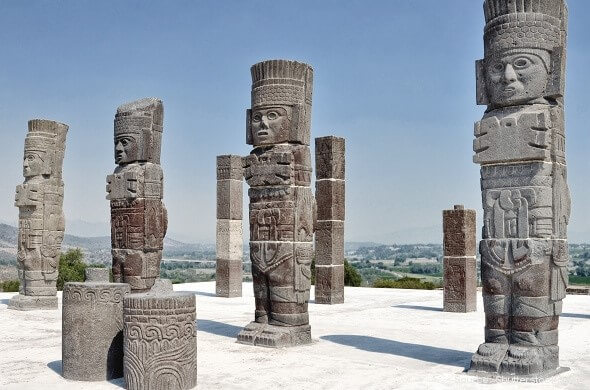
The Toltec warriors of the Tula Mexico Ruins.
Although the main pyramid at Tula isn’t huge, it is beautifully decorated and extremely well made. Sitting atop of the structure are 4 carved figures, thought to be ancient Toltec warriors.
The sophistication and skill needed to create such works is large, with the 4-meter figures carved from solid basalt. This Mexican ruin was once the capital of the Toltec empire and has many references to the quasi-mythical God Quetzalcoatl.
Conclusion
Mexico is home to thousands of ruins that span many different ancient civilizations.
If you’re traveling the area, make sure to visit one near you!
Now it’s up to you. Have you visited any of the ancient ruins in this post?
What other ruins would you suggest to visit?


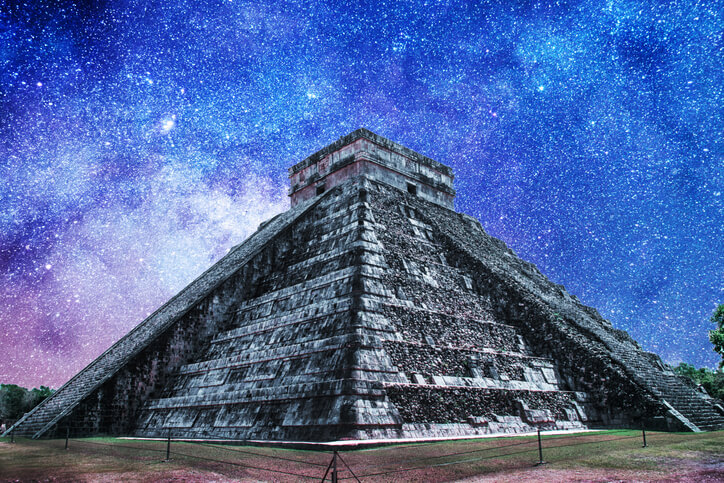 Mexico is home to thousands of ancient sites. Home to a mix of different lost civilizations, be sure to visit the mysteries of Mexico.
Mexico is home to thousands of ancient sites. Home to a mix of different lost civilizations, be sure to visit the mysteries of Mexico. 